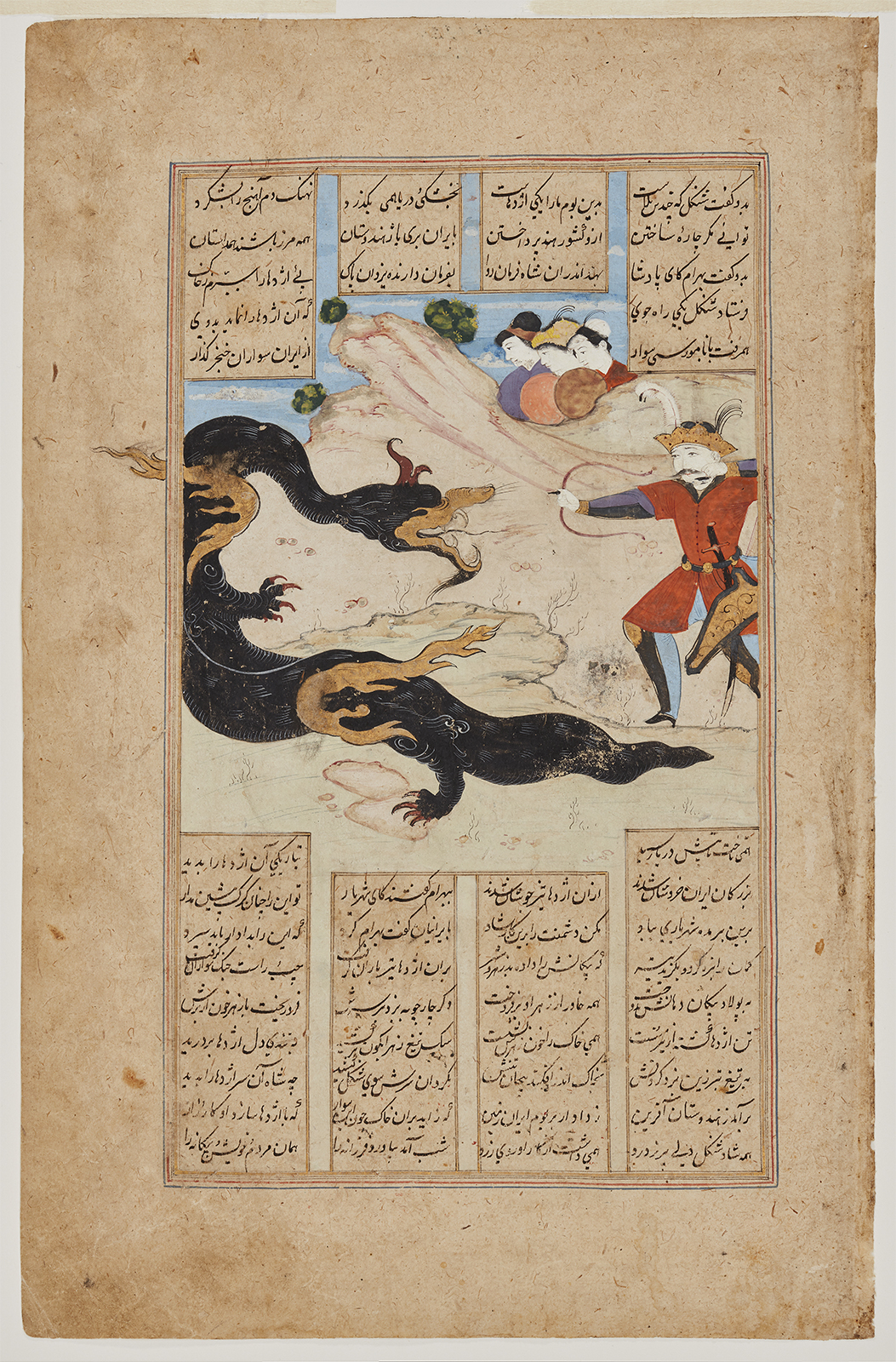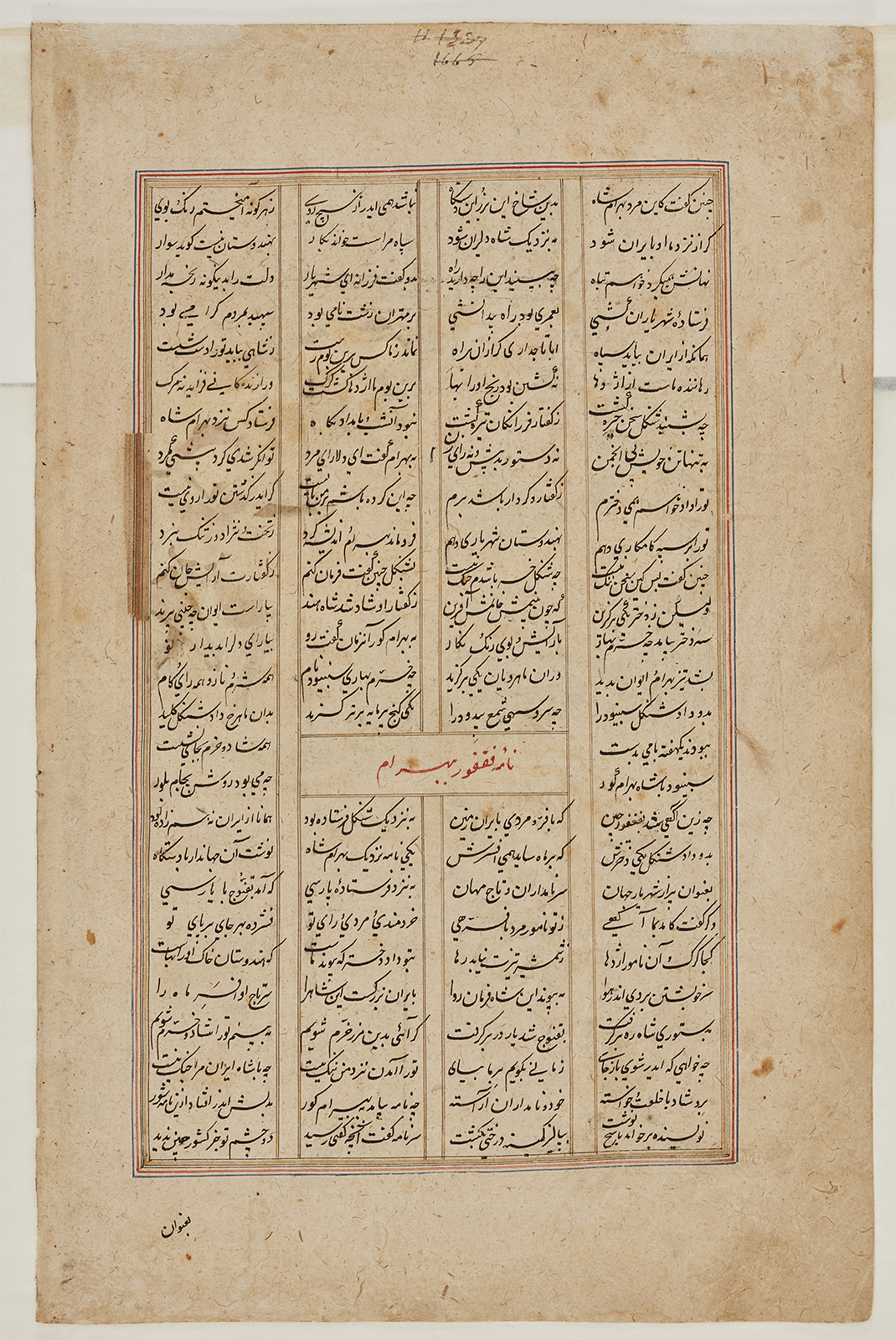Click on the image to zoom
Bahram Gur Kills a Dragon
From a manuscript of "Shahnameh" (Book of Kings) by Firdausi (d. 1020)
- Accession Number:AKM80
- Creator:Artist (painter attributed): Mu'in Musavvir, Persian, 1638 - ca. 1698
Author: Firdausi, Persian, ca. 935 - 1020 - Place:Iran, probably Isfahan
- Dimensions:34.4 cm x 22.1 cm
- Date:1666-67
- Materials and Technique:opaque watercolour, ink, and gold on paper
The exploits of Vaharam the Fifth (r. 420–38), a historical king of Iran’s pre-Islamic Sasanian Empire (224–651), were spun into legend by medieval Persian authors. In the literary tradition, he is remembered as Bahram Gur. The word gur means “onager,”[1] referring to a kind of wild donkey that the monarch is renowned for having slaughtered using an elaborate archery technique. In the Shahnameh, Iran’s national epic, Bahram Gur’s prowess as a hunter was recognized by Shangol, the ruler of India, who asks him to eliminate a gargantuan dragon wreaking havoc in the land. Firdausi, the poet of the Shahnameh, vividly describes the dragon as having “lived both in the water and on dry land, sometimes swimming in the sea and, at other times, sunning on land. Its enormous tail was so powerful that it could encompass an elephant. It could also generate huge waves in the sea.”[2]
— Michael Chagnon
Notes
[1] گور gor (n.d.). In Francis Joseph Steingass, A Comprehensive Persian-English Dictionary, https://dsal.uchicago.edu/dictionaries/steingass.
[2] For a recent English translation of the Shahnameh, see Abolqasem Ferdowsi, Shahnameh: The Persian Book of Kings, trans. Dick Davis (Washington, DC: Mage, 2006).
References
Ferdowsi, Abolqasem. Shahnameh: The Persian Book of Kings, trans. Dick Davis. Washington, DC: Mage, 2006. ISBN: 9780143104933
Steingass, Francis Joseph. A Comprehensive Persian-English Dictionary, https://dsal.uchicago.edu/dictionaries/steingass/
Note: This online resource is reviewed and updated on an ongoing basis. We are committed to improving this information and will revise and update knowledge about this object as it becomes available.




